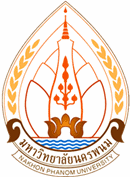ผลการใช้แนวทางปฏิบัติเพื่อป้องกันการเกิดภาวะตกเลือดในระยะ 2 ชั่วโมงหลังคลอดในมารดาคลอดปกติ โรงพยาบาลโชคชัย
Effects of Clinical Practice Guidelines toward the Prevention of Postpartum Hemorrhage within Two Hours after Delivery during Normal Vaginal Delivery in Chokchai Hospital
Keywords:
Postpartum Hemorrhage, Clinical Practice Guidelines, Normal Vaginal DeliveryAbstract
This study consists of research and development directed toward the development of clinical practice guidelines for the prevention of postpartum hemorrhage within two hours after delivery during normal vaginal delivery in Chokchai Hospital. This study subdivides into 3 implementation phases, as follows: 1) the preparation phase, 2) the implementation phase and 3) the evaluation phase. The samples used in this study consisted of 7 registered nurses working in the delivery room and 60 women who had undergone normal vaginal delivery. The data was collected from May to July of 2022. The research instrumentation was based on the clinical practice guidelines for prevention and nursing care of postpartum hemorrhage No. CNPG – LAR– 001. Data collection instruments consisted of 1) personal data questionnaires, 2) guidelines for the prevention of postpartum hemorrhage two hours after delivery in the form of questionnaires and 3) satisfaction with the use of the guideline questionnaires. Data were analyzed through the use of descriptive statistics.
Result: Results indicated that no postpartum hemorrhage occurred within two hours following delivery. The registered nurses were applying the clinical practice guidelines for the prevention of postpartum hemorrhage. The main 3 non-interventionist practices were as follows: 1) using a model to simulate the uterus, accounting for 42.9% of the practices employed, 2) assessing vaginal bleeding and perineum that were at risk of postpartum hemorrhage, accounting for 28.6% of the practices employed and 3) immediately uterine massage for the expulsion of the placenta, use of uterotonic agents and use of an ice pack, accounting for 14.3% of the practices employed. Satisfaction with the use of clinical practice guidelines for the prevention of postpartum was at a very high level.
Recommendations: 1) Prenatal risk assessment of all maternal hemorrhage should be assessed, 2) Postpartum-hemorrhage prevention guidelines should be adapted to the maternal risks so that the steps in the guidelines will be appropriate and can be applied practically and 3) The developed guidelines should be applied to a larger sample size to increase the confidence level of the guidelines.




